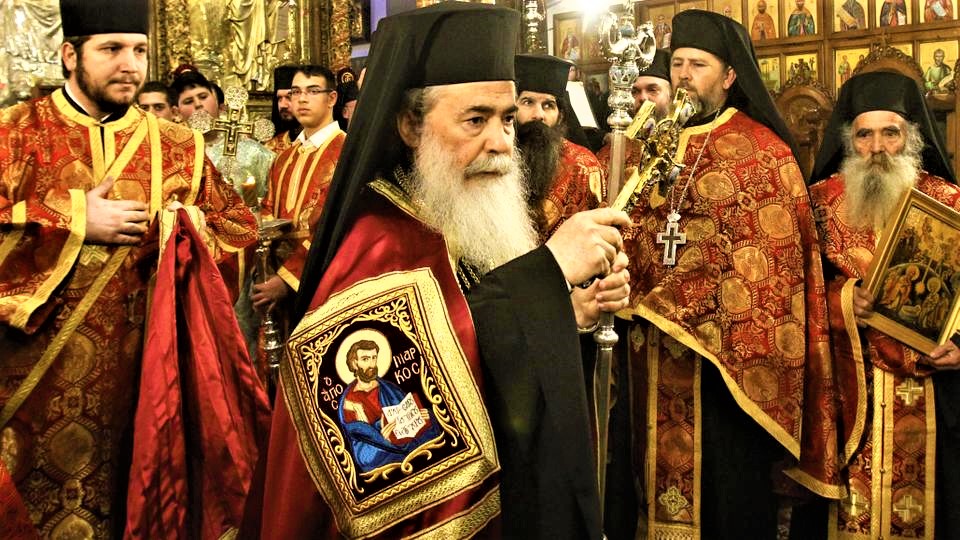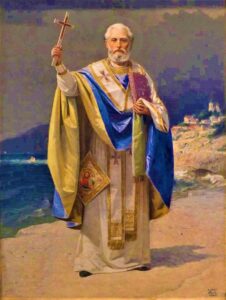Peace at Gregorian Christmas (Part 2): The Evolution of Christmas in the 21st Century
TRANSCEND MEMBERS, 23 Jan 2023
Prof Hoosen Vawda – TRANSCEND Media Service
“Peace at Christmas: The Beginning”[1]
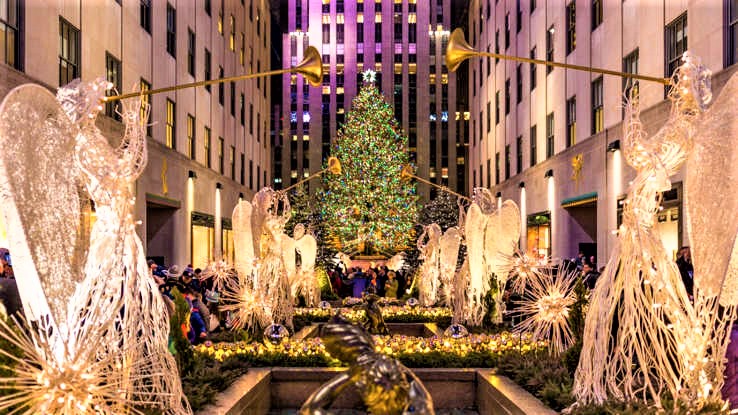
The Traditional Christmas Tree in New York City, adorned with five miles of lighting, annually signifying the period of Joyous Festivities
This, Part 2 discusses the beginnings of traditional Christmas as celebrated by the majority of the Christians, except the Eastern Orthodox Christians, such as the Russians, Greeks and Serbians, who observe Christmas on the 07th of January, annually. Many Orthodox Christians annually celebrate Christmas Day on or near 07th January, to remember Jesus Christ’s birth, described in the Christian Bible. This date works to the Julian calendar that pre-dates the Gregorian calendar, which is commonly observed.[2]
As Christmas approaches, capitals around the world are dressing up for the occasion with their brightest lights. This includes, like every year, an element of Christmas decorations that cannot be missed: the majestic Christmas tree At the All’interno delle Galeries Lafayette Paris there is a monumental tree with an arctic theme, made entirely of papier-mâché by the artist French Lorenzo Papace, Outer Space, with meteors and other celestial bodies that adorn the structure. When it comes to Christmas, New York City decorations are hard to beat. The spruce that is erected every year in the Rockefeller Center is probably the most famous Christmas tree in the world with more than five miles of lights and a star made of three million crystals Swarovski make this tree one of the most beautiful in the world. In Milan there are three of the most beautiful and glamourous Christmas trees: the first of Dior is a spectacular installation with golden hues in Piazza della Scala; that of Chanel illuminates Piazza Cordusio and finally that of Swarovski in Galleria Vittorio Emanuele II with more than 10,000 lights and over 200 decorations.
While currently, Christmas is celebrated by the erection and display of these extravagant and ostentatious Christmas trees, one fashion house upstaging the other, to promote the sales of their products to the willing consumers, the true spirit of Christmas has become obscured in the 21st century, globally. The main focus is pursuit of materialism and this is the evolution of our present-day observance of Christmas.
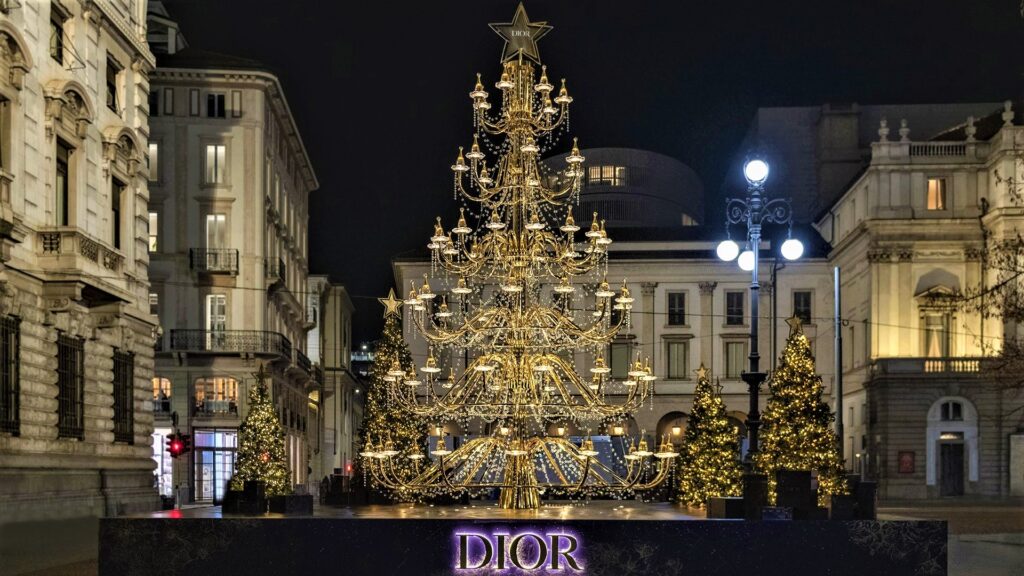
The Christmas tree of Dior in Milan
The spectacular installation with golden hues that will illuminate Piazza della Scala until 6 January 2023. Image by Press Office Dior
However, let us examine how this transformation has come about, when Christmas was associated with the act of charity and giving, to this present state of amassment of material wealth, over the centuries. Greece celebrates Saint Nicholas, who according to the Christian Orthodox faith is the predecessor of Santa Claus, on 06th December.[3]
The omnipresent, joyous, white-bearded man who dressed in red most of the time, became particularly popular in the 19th century, but his story unwinds back into the past of Bishop Nicholas. He was the devoted Greek bishop who lived in the 4th century in the Lycian town of Myra in Asia Minor. Although Santa Claus, or Father Christmas, is the figure that all nations with Christian traditions associate with the Christmas holiday, one major difference exists between the Greeks and the rest of the world regarding the identity of the man who brings good children their gifts at this most special time of year. In Greece, the Americanized version of Santa Claus simply does not exist, and children await their beloved Agios Vasilis (Saint Basil) to bring them gifts on New Year’s Day. Although this classic image of Santa Claus originated from Western Europe, his name is clearly a derivation of “Saint Nicholas” since “Claus” is a foreshortened Germanic version of the name “Nicholas.” The name Sinterklaas, or St. Nicholas, as he was known by the Germanic peoples became Anglicized to “Santa Claus.” This happened as part of a completely natural merging of traditions between many of the early Western European immigrants who made America their new home, effecting this transformation. Saint Nicholas of Myra, traditionally 15th March 270 – 6 December 343),[4] as Nicholas of Bari, was an early Christian bishop of Greek descent from the maritime city of Myra in Asia Minor, modern-day Demre, Turkey, during the time of the Roman Empire.[5] Because of the many miracles attributed to his intercession, he is also known as Nicholas the Wonderworker. Saint Nicholas is the patron saint of sailors, merchants, archers, repentant thieves, children, brewers, pawnbrokers, unmarried people, and students in various cities and countries around Europe. His reputation evolved among the pious, as was common for early Christian saints, and his legendary habit of secret gift-giving gave rise to the traditional model of Santa Claus (“Saint Nick”) through Sinterklaas.
Little is known about the historical Saint Nicholas. The earliest accounts of his life were written centuries after his death and probably contain legendary elaborations. He is said to have been born in the Greek seaport of Patara, Lycia, in Asia Minor to wealthy Christian parents.[6]
Serving as Bishop of Myra, he was known also as a participant in the seminal Council of Nicaea in the year 325, during which the adoption of the Nicene Creed took place. The Creed forms the basis of the belief system of Christians.[7] He was later cast into prison during the persecution of Diocletian but was released after the accession of Constantine.
Saint Nicholas was reported at the time to have spoken out vociferously against the Arians, or those who believed that Jesus Christ was not divine but completely human. An anecdote that has survived through the millennia says that Nicholas either slapped the face or boxed the ears of one of his ideological opponents. Whether or not this is true, another action of his, much more generous, was recorded as well. A poor family in Myra with many daughters was known to have fallen upon hard times, which were so dire, in fact, that the father was considering selling one of his daughters into slavery just so the others could survive. To save her from that horrendous fate, Saint Nicholas threw gold coins down the chimney of the man’s house, thereby saving her and rescuing the family from their predicament. Whether or not things happened in exactly this way, it was Saint Nicholas who was said to have committed this act of kindness, and this is the reason why he is associated with chimneys. One version of the story even holds that the gold coins landed in the girl’s stocking, which she had hung up on the mantel to dry. This is why “gold coins”, actually made of chocolate, are gifted at Christmastime. Fewer than two hundred years after Nicholas’s death, St. Nicholas Church was built in Myra under the orders of Theodosius II over the site of the church where he had served as a bishop. Nicholas’s remains were moved to a sarcophagus in that church. In 1087, the Christian Greeks of the region were subjugated by the newly arrived Muslim Seljuk Turks. Soon afterward, a group of merchants from the Italian city of Bari removed the major bones of Nicholas’ skeleton from his sarcophagus in the church without authorization and brought them to their hometown. The remains are now enshrined in the Basilica di San Nicola. The remaining bone fragments from the sarcophagus were later removed by Venetian sailors and taken to Venice during the First Crusade.
After his parents died, Nicholas is said to have distributed their wealth to the poor.[8] In his most famous exploit,[9] which is first attested in Michael the Archimandrite’s Life of Saint Nicholas, Nicholas heard of a devout man who had once been wealthy but had lost all of his money due to the “plotting and envy of Satan.”[10] could not afford proper dowries for his three daughters. This meant that they would remain unmarried and probably, in absence of any other possible employment, be forced to become prostitutes. Hearing of the girls’ plight, Nicholas decided to help them, but, being too modest to help the family in public (or to save them the humiliation of accepting charity), he went to the house under the cover of night and threw a purse filled with gold coins through the window opening into the house. The father immediately arranged a marriage for his first daughter, and after her wedding, Nicholas threw a second bag of gold through the same window late at night.
According to Michael the Archimandrite’s account, after the second daughter was married, the father stayed awake for at least two “nights” and caught Saint Nicholas in the same act of charity toward the third daughter. The father fell on his knees, thanking him, and Nicholas ordered him not to tell anyone about the gifts. The scene of Nicholas’s secret gift-giving is one of the most popular scenes in Christian devotional art, appearing in icons and frescoes from across Europe. Although depictions vary depending on time and place, Nicholas is often shown wearing a cowl while the daughters are typically shown in bed, dressed in their nightclothes. Many renderings contain a cypress tree or a cross-shaped cupola.[11]
The historicity of this incident is disputed. Adam C. English argues for a historical kernel to the legend, noting the story’s early attestation as well as the fact that no similar stories were told about any other Christian saints. Jona Lendering, who also argues for the story’s authenticity, notes that a similar story is told in Philostratus’s Life of Apollonius of Tyana, in which Apollonius gives money to an impoverished father but posits that Michael the Archimandrite’s account is markedly different. Philostratus does not mention the fate of the daughters and, in his story, Apollonius’s generosity is purely motivated out of sympathy for the father; in Michael the Archimandrite’s account, however, Saint Nicholas is instead expressly stated to be motivated by a desire to save the daughters from being sold into prostitution. He argues that this desire to help women is most characteristic of fourth-century Christianity, due to the prominent role women played in the early Christian movement, rather than Greco-Roman paganism or the Christianity of Michael the Archimandrite’s time in the ninth century, by which point the position of women had drastically declined.[13] In another story, Nicholas is said to have visited the Holy Land. The ship he was on was nearly destroyed by a terrible storm but he rebuked the waves, causing the storm to subside. Thus, Nicholas became venerated as the patron saint of sailors and travelers.[14]
Another theory associates Saint Nicholas as a Christianized version of the ancient Greek god Poseidon, who tormented Odysseus for killing his son Polyphemos by keeping him away from Ithaca for many years. Among the Greeks and Italians, he is a favorite of sailors, fishermen, ships, and sailing. As such, over time, he has become the patron saint of several cities maintaining harbors just like in the case of Myra. In centuries of Greek folklore, Nicholas was seen as “The Lord of the Sea,” often described by modern Greek scholars as a kind of Christianized version of Poseidon. When Christianity was established as the formal state religion of the Roman Empire, churches began to rise in the ruins of the temples of the former deities of the ancient Greeks. According to many religious historians, Nicholas’ life story and legends resemble much of the mythology and legends attributed to the ancient Greek god Poseidon, the Roman god Neptune, and the Teutonic god Hold Nickar.[15]
Furthermore, the feast day of St. Nicholas is 06th December, the day when the bishop of Myra is reported to have died (342 AD). This day is speculated by many to likely have been a feast of Poseidon in pre-Christian times, marking the beginning of winter and possibly the day when navigation ended and ships returned to the harbors. In Athens and other parts of ancient Greece, there was a month that roughly corresponded to December or January was named Poseidon for the sea-god Poseidon.[16]
The episode with the three dowries is commemorated by showing him holding in his hand either three purses, three coins or three balls of gold. Depending on whether he is depicted as patron saint of children or sailors, his images will be completed by a background showing ships, children or three figures climbing out of a wooden barrel (the three slaughtered children he resurrected).[17]
In a strange twist, the three gold balls referring to the dowry affair are sometimes metaphorically interpreted as being oranges or other fruits. As in the Low Countries in medieval times oranges most frequently came from Spain, this led to the belief that the Saint lives in Spain and comes to visit every winter bringing them oranges, other ‘wintry’ fruits and tales of magical creatures.
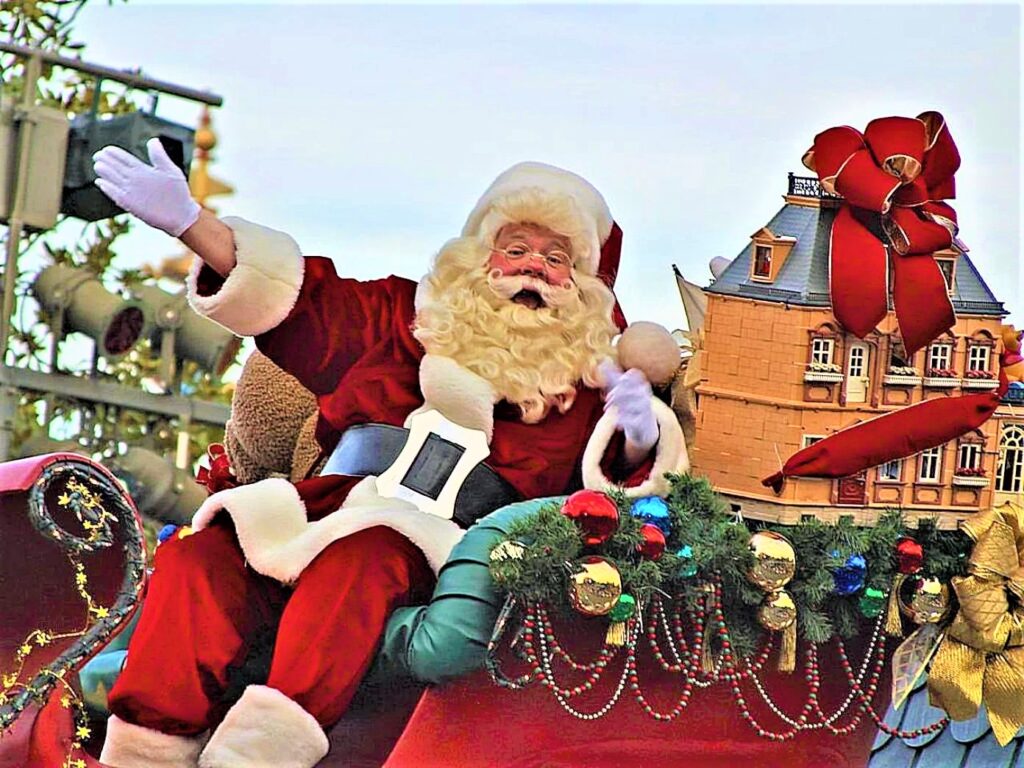
The name Sinterklaas, or St. Nicholas, as he was known by the Germanic peoples became Anglicised to “Santa Claus.” [18]
The Bottom Line is there are two questions which need further analyses, regarding the observance of Christmas itself. Firstly, while the majority of Christians celebrate Christmas on 25th December, traditionally, the date is debatable. Secondly and more importantly, the question of the phenotype of Jesus Christ himself. The portrayal of Jesus as a white, European man has come under renewed scrutiny during this period of introspection over the legacy of racism in society. As protesters called for the removal of Confederate statues in the U.S., activist Shaun King went further, suggesting that murals and artwork depicting “white Jesus” should “come down.”[19]
His concerns about the depiction of Christ and how it is used to uphold notions of white supremacy are not isolated. Prominent scholars and the archbishop of Canterbury have called to reconsider Jesus’ portrayal as a white man. As a European Renaissance art historian, I study the evolving image of Jesus Christ from A.D. 1350 to 1600. Some of the best-known depictions of Christ, from Leonardo da Vinci’s “Last Supper” to Michelangelo’s “Last Judgment” in the Sistine Chapel, were produced during this period. But the all-time most-reproduced image of Jesus comes from another period. It is Warner Sallman’s [20]light-eyed, light-haired “Head of Christ” from 1940. Sallman, a former commercial artist who created art for advertising campaigns, successfully marketed this picture worldwide. Through Sallman’s partnerships with two Christian publishing companies, one Protestant and one Catholic, the Head of Christ came to be included on everything from prayer cards to stained glass, faux oil paintings, calendars, hymnals and night lights. Sallman’s painting culminates a long tradition of white Europeans creating and disseminating pictures of Christ made in their own image.
In search of the holy face, the historical Jesus likely had the brown eyes and skin of other first-century Jews from Galilee, a region in biblical Israel. But no one knows exactly what Jesus looked like. There are no known images of Jesus from his lifetime, and while the Old Testament Kings Saul and David are explicitly called tall and handsome in the Bible, there is little indication of Jesus’ appearance in the Old or New Testaments.[21]
Even these texts are contradictory: The Old Testament prophet Isaiah reads that the coming savior “had no beauty or majesty,” while the Book of Psalms claims he was “fairer than the children of men,” the word “fair” referring to physical beauty. The earliest images of Jesus Christ emerged in the first through third centuries A.D., amidst concerns about idolatry. They were less about capturing the actual appearance of Christ than about clarifying his role as a ruler or as a savior. To clearly indicate these roles, early Christian artists often relied on syncretism, meaning they combined visual formats from other cultures. Probably the most popular syncretic image is Christ as the Good Shepherd, a beardless, youthful figure based on pagan representations of Orpheus, Hermes and Apollo. In other common depictions, Christ wears the toga or other attributes of the emperor. The theologian Richard Viladesau argues that the mature bearded Christ, with long hair in the “Syrian” style, combines characteristics of the Greek god Zeus and the Old Testament figure Samson, among others.
Often, Christ is described as a self-portraitist. The first portraits of Christ, in the sense of authoritative likenesses, were believed to be self-portraits: the miraculous “image not made by human hands,” or acheiropoietos.[22] This belief originated in the seventh century A.D., based on a legend that Christ healed King Abgar of Edessa in modern-day Urfa, Turkey, through a miraculous image of his face, now known as the Mandylion. A similar legend adopted by Western Christianity between the 11th and 14th centuries recounts how, before his death by crucifixion, Christ left an impression of his face on the veil of Saint Veronica, an image known as the volto santo, or “Holy Face.” Christ crowned with thorns. Artist Antonello da Messina. The Friedsam Collection, Bequest of Michael Friedsam, 1931, Metropolitan Museum, New York. Christ crowned with thorns. Artist Antonello da Messina. The Friedsam Collection, Bequest of Michael Friedsam, 1931, Metropolitan Museum, New York © Provided by The Conversation. These two images, along with other similar relics, have formed the basis of iconic traditions about the “true image” of Christ.
From the perspective of art history, these artifacts reinforced an already standardized image of a bearded Christ with shoulder-length, dark hair. In the Renaissance, European artists began to combine the icon and the portrait, making Christ in their own likeness. This happened for a variety of reasons, from identifying with the human suffering of Christ to commenting on one’s own creative power.
The 15th century Sicilian painter Antonello da Messina, for example, painted small pictures of the suffering Christ formatted exactly like his portraits of regular people, with the subject positioned between a fictive parapet and a plain black background and signed “Antonello da Messina painted me.” The 16th-century German artist Albrecht Dürer blurred the line between the holy face and his own image in a famous self-portrait of 1500. In this, he posed frontally like an icon, with his beard and luxuriant shoulder-length hair recalling Christ’s. The “AD” monogram could stand equally for “Albrecht Dürer” or “Anno Domini” – “in the year of our Lord.” In whose image? This phenomenon was not restricted to Europe: There are 16th and 17th -century pictures of Jesus with, for example, Ethiopian and Indian features. In Europe, however, the image of a light-skinned European Christ began to influence other parts of the world through European trade and colonization.
The Italian painter Andrea Mantegna’s “Adoration of the Magi” from A.D. 1505 features three distinct magi, who, according to one contemporary tradition, came from Africa, the Middle East and Asia. They present expensive objects of porcelain, agate and brass that would have been prized imports from China and the Persian and Ottoman empires. But Jesus’ light skin and blues eyes suggest that he is not Middle Eastern but European-born. And the faux-Hebrew script embroidered on Mary’s cuffs and hemline belie a complicated relationship to the Judaism of the Holy Family. In Mantegna’s Italy, anti-Semitic myths were already prevalent among the majority Christian population, with Jewish people often segregated to their own quarters of major cities. Artists tried to distance Jesus and his parents from their Jewishness. Even seemingly small attributes like pierced ears – earrings were associated with Jewish women, their removal with a conversion to Christianity – could represent a transition toward the Christianity represented by Jesus. Much later, anti-Semitic forces in Europe including the Nazis would attempt to divorce Jesus totally from his Judaism in favor of an Aryan stereotype.
White Jesus abroad: as Europeans colonized increasingly farther-flung lands, they brought a European Jesus with them. Jesuit missionaries established painting schools that taught new converts Christian art in a European mode. A small altarpiece made in the school of Giovanni Niccolò, the Italian Jesuit who founded the “Seminary of Painters” in Kumamoto, Japan, around 1590, combines a traditional Japanese gilt and mother-of-pearl shrine with a painting of a distinctly white, European Madonna and Child.[23] In colonial Latin America – called “New Spain” by European colonists – images of a white Jesus reinforced a caste system where white, Christian Europeans occupied the top tier, while those with darker skin from perceived intermixing with native populations ranked considerably lower. Artist Nicolas Correa’s 1695 painting of Saint Rose of Lima, the first Catholic saint born in “New Spain,” shows her metaphorical marriage to a blond, light-skinned Christ. Regarding of Legacies of likeness, scholar Edward J. Blum and Paul Harvey argue that in the centuries after European colonisation of the Americas, the image of a white Christ associated him with the logic of empire and could be used to justify the oppression of Native and African Americans. In a multiracial but unequal America, there was a disproportionate representation of a white Jesus in the media. It wasn’t only Warner Sallman’s Head of Christ that was depicted widely; a large proportion of actors who have played Jesus on television and film have been white with blue eyes. Pictures of Jesus historically have served many purposes, from symbolically presenting his power to depicting his actual likeness. But representation matters, and viewers need to understand the complicated history of the images of Christ they consume. Therefore, in summary, the concept of Christmas has evolved in two areas, firstly as a money generating period for businesses and corporates and secondly as a graphic tool to depict Jesus Christ as a white person to highlight the superiority of the white colonisers compared with the indigenous peoples of the land which were colonised. In all this intrigue, obfuscation and financially driven agenda, what little left of spirituality and peace are lost to materialism and racism, even in religion.
The author wishes the readers a peaceful New Year, with goodness, prosperity and excellence in personal health, noting that the Covid infections are rearing their monstrous head again, in China. Hopefully, the virus will not spread, this time around, globally.
References:
[1] Personal quote by the author, December 2022.
[2] https://www.timeanddate.com/holidays/common/orthodox-christmas-day
[3] https://greekreporter.com/2022/12/06/greece-celebrates-saint-nicholas-santa-claus/#:~:text=Greece%20celebrates%20Saint%20Nicholas%2C%20who%20according%20to%20the%20Christian%20Orthodox%20faith%20is%20the%20predecessor%20of%20Santa%20Claus%2C%20on%20December%206th.
[4] https://web.archive.org/web/20101010104847/http://www.stnicholascenter.org/Brix?pageID=38
[5] https://en.wikipedia.org/wiki/Saint_Nicholas#:~:text=Cunningham%2C%20Lawrence%20(2005,icon%2C%20Santa%20Claus.
[6] https://en.wikipedia.org/wiki/Saint_Nicholas#:~:text=Collins%2C%20Ace%20(2009).%20Stories%20Behind%20Men%20of%20Faith.%20Zondervan.%20p.%C2%A0121.%20ISBN%C2%A09780310564560.%20
[7] https://greekreporter.com/2022/12/06/greece-celebrates-saint-nicholas-santa-claus/#:~:text=Serving%20as%20Bishop%20of%20Myra%2C%20he%20was%20known%20also%20as%20a%20participant%20in%20the%20seminal%20Council%20of%20Nicaea%20in%20the%20year%20325%2C%20during%20which%20the%20adoption%20of%20the%20Nicene%20Creed%20took%20place.%20The%20Creed%20forms%20the%20basis%20of%20the%20belief%20system%20of%20Christians.
[8] https://en.wikipedia.org/wiki/Saint_Nicholas#CITEREFFerguson1976
[9] https://en.wikipedia.org/wiki/William_Bennett
[10] https://web.archive.org/web/20180703051940/http://www.stnicholascenter.org/pages/michael-the-archimandrite/
[11] https://en.wikipedia.org/wiki/Saint_Nicholas#CITEREFSeal2005
[12] https://en.wikipedia.org/wiki/File:Uro%C5%A1_Predi%C4%87_-_Sveti_Nikola.jpg
[13] https://en.wikipedia.org/wiki/Saint_Nicholas#CITEREFLendering2006
[14] https://en.wikipedia.org/wiki/Saint_Nicholas#CITEREFFerguson1976
[15] https://greekreporter.com/2022/12/06/greece-celebrates-saint-nicholas-santa-claus/#:~:text=Saint%20Nicholas%3A%20A,god%20Hold%20Nickar.
[16] https://greekreporter.com/2022/12/06/greece-celebrates-saint-nicholas-santa-claus/#:~:text=Furthermore%2C%20the%20feast,sea%2Dgod%20Poseidon.
[17] http://www.cantius.org/go/liturgy_devotions/liturgical_seasons/advent_extraordinary/saint_nicholas/
[18] https://greekreporter.com/2022/12/06/greece-celebrates-saint-nicholas-santa-claus/#:~:text=The%20name%20Sinterklaas%2C%20or%20St.%20Nicholas%2C%20as%20he%20was%20known%20by%20the%20Germanic%20peoples%20became%20Anglicized%20to%20%E2%80%9CSanta%20Claus.%E2%80%9D
[19] https://www.msn.com/en-za/news/world/the-long-history-of-how-jesus-came-to-resemble-a-white-european/ar-BB16RCUM?ocid=msedgdhp&pc=U531&cvid=4f07d7856a7b4094bbed7b4220ac2714#:~:text=The%20earliest%20images,their%20academic%20appointment.
[20] https://www.bing.com/ck/a?!&&p=90b4135a73c4dd1aJmltdHM9MTY3MjI3MjAwMCZpZ3VpZD0wYjAyZjg1ZC1mZTdmLTZkY2YtMDU4ZS1lYTIzZmYwZDZjNzYmaW5zaWQ9NTIwOA&ptn=3&hsh=3&fclid=0b02f85d-fe7f-6dcf-058e-ea23ff0d6c76&psq=Warner+Sallman%e2%80%99s&u=a1aHR0cHM6Ly9lbi53aWtpcGVkaWEub3JnL3dpa2kvV2FybmVyX1NhbGxtYW4&ntb=1
[21] The Good Shepherd.’ Joseph Wilpert © Provided by The Conversation
[22] Acheiropoietos. Tretiakov Gallery, Moscow © Provided by The Conversation
[23] Nicolas Correa’s ‘The Mystic Betrothal of Saint Rose of Lima.’ Museo Nacional de Arte © Provided by The Conversation
______________________________________________
READ PART 1: The Peace at Saturnalia
READ PART 3: Palpable Peace: The Institution of the Iconic Christmas Tree
 Professor G. Hoosen M. Vawda (Bsc; MBChB; PhD.Wits) is a member of the TRANSCEND Network for Peace Development Environment.
Professor G. Hoosen M. Vawda (Bsc; MBChB; PhD.Wits) is a member of the TRANSCEND Network for Peace Development Environment.
Director: Glastonbury Medical Research Centre; Community Health and Indigent Programme Services; Body Donor Foundation SA.
Principal Investigator: Multinational Clinical Trials
Consultant: Medical and General Research Ethics; Internal Medicine and Clinical Psychiatry:UKZN, Nelson R. Mandela School of Medicine
Executive Member: Inter Religious Council KZN SA
Public Liaison: Medical Misadventures
Activism: Justice for All
Email: vawda@ukzn.ac.za
Tags: Christianity, Christmas
This article originally appeared on Transcend Media Service (TMS) on 23 Jan 2023.
Anticopyright: Editorials and articles originated on TMS may be freely reprinted, disseminated, translated and used as background material, provided an acknowledgement and link to the source, TMS: Peace at Gregorian Christmas (Part 2): The Evolution of Christmas in the 21st Century, is included. Thank you.
If you enjoyed this article, please donate to TMS to join the growing list of TMS Supporters.

This work is licensed under a CC BY-NC 4.0 License.
